Pillbox or Observation Post?
Posted: 10 June 2020 19:00
I've recently noticed an increase in the numer of social media posts concerning some of the Second World War pillbox designs seen in the Rye area, so I'm going to make a few points about them.
There's two designs we need to look at; the photo below shows one of a pair of pillboxes at the mouth of Rye Harbour. Note how large the embrasures are, both in width and height.
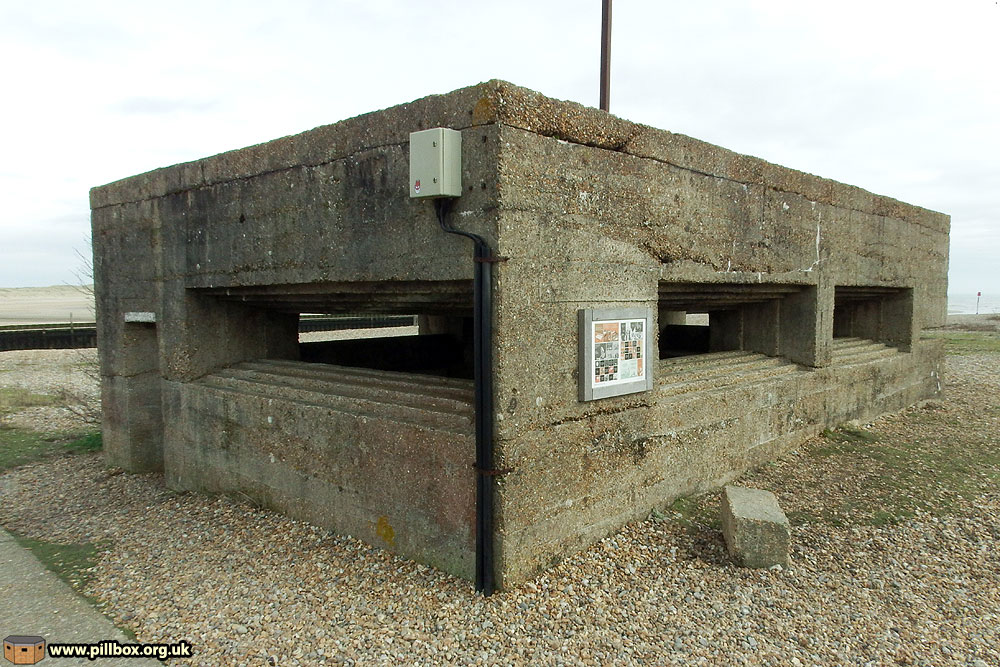
I won't go into much detail about this design here (it deserves its own dedicated post), suffice it to say that the archive documents tell us that Vickers guns were sited in here with fire tasks out to 2,500 yards (1.5 miles). This extreme range requires the guns to fire at elevation, which is why you need large embrasures. We set up a Vickers gun in one of the pillboxes in 2018 to test the theory, as shown below:
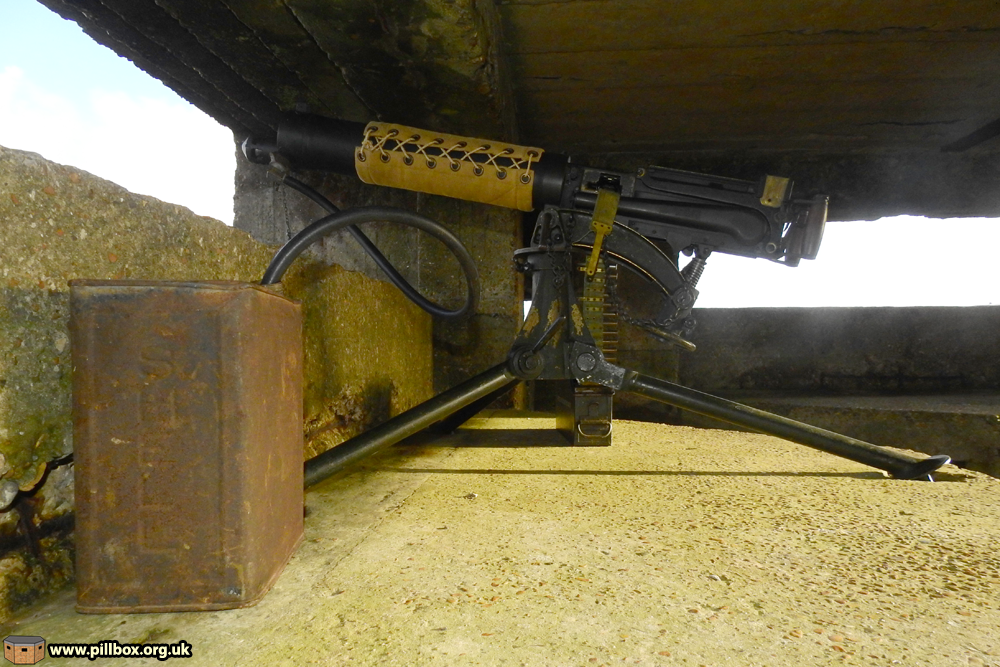
Now let's look at the design that's causing a lot of confusion on social media. The two photos below show a pillbox at Camber from two different angles; note the almost continuous and low embrasure and the height of the roof above it.
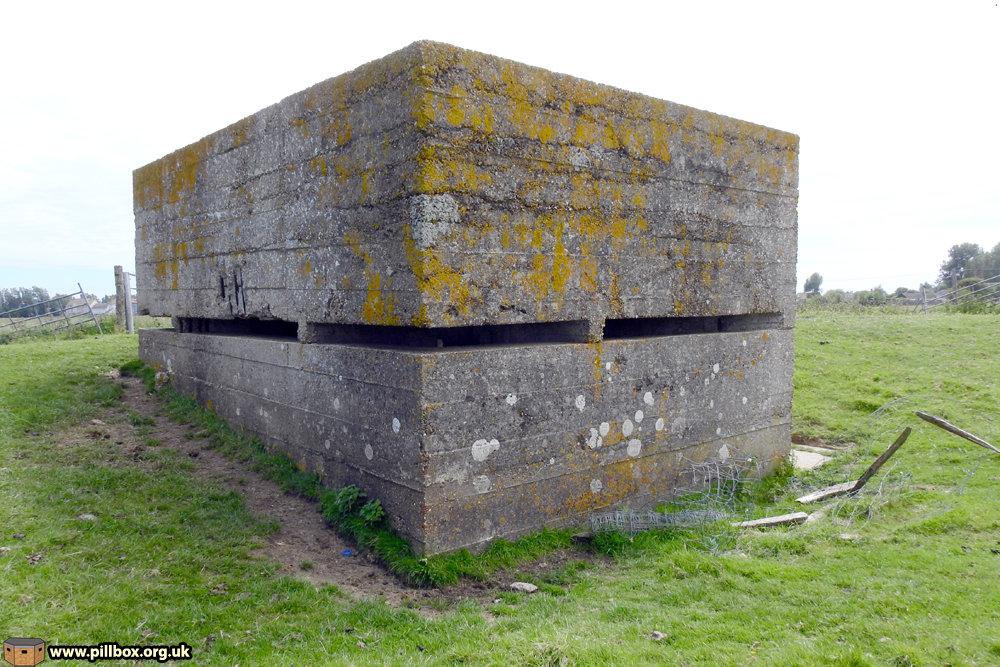
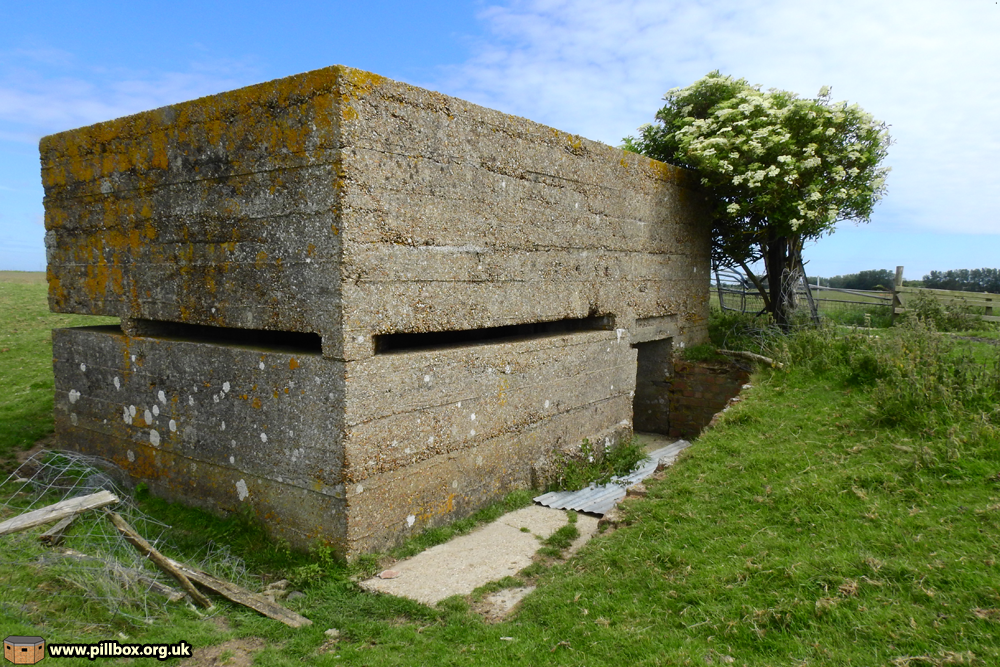
So, what's the issue with this design? Well, people are looking at the very large embrasures of the Rye Harbour pillboxes and assuming (correctly) that machine guns would have been fired from within them. The issue is that when comparing the harbour examples to the second pillbox design, the same people are seeing high vs low embrasures and, because the high ones are known to be for machine guns, it is assumed that low embrasures are for a different purpose. The logic, therefore, is that this second design is not actually a pillbox, but an observation post because of the low embrasures.
How did people arrive at this idea? Firstly, aside from comparing two contemporary pillbox designs, construction of which was overseen by the same Royal Engineers Field Company in August 1940, comparison is also made with a completely different kind of structure, namely the airfield battle headquarters building, shown below.
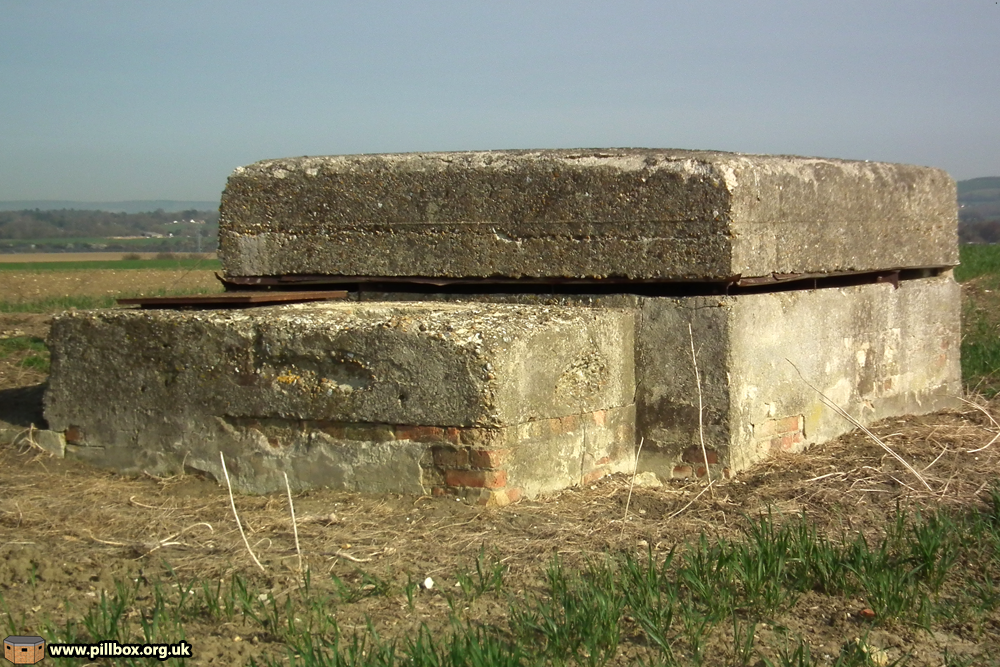
A casual glance at the battle HQ (this is just the observation post (OP); there's actually a series of underground rooms connected to it) shows why our pillbox is frequently misidentified as an OP. Note the low, continuous embrasure and thick roof above it. I think people are looking at these features, and knowing the battle HQ was for observation for those coordinating the ground defence of an airfield, assume any structure bearing the same design features must also be for observation. This is an incorrect assumption however.
This leads us into another problem; long-range 'diagnosis' of structures via the Internet. Somebody posts a photo online and the pillbox armchair experts will try to identify the type and purpose of said structure purely from the photo and without having ever visited the site. Although an opinion proffered can often be helpful, when the respondent probably knows about as much as the enquirer, we get incorrect assumptions as our Rye pillbox design has shown time and again.
So how do we analyse the Rye pillbox design? The same way as we investigate any structure; site visit and survey, tied in with archive research and 3D modelling. The archives had already yielded information about these pillboxes in the form of a list of grid references and various fire plans that show some of them had Bren light machine guns mounted in them. (The Royal Engineers who oversaw construction of these also specifically refer to them as pillboxes.) We therefore already know we're looking for Bren gun compatibility in our low embrasures, so let's have a look inside one of these pillboxes.
I did a basic survey of the pillbox at Camber in the photos above; the interior is shown below. Note how the narrow embrasures open up, providing headroom for the garrison. The position of the stanchions holding up the roof vary, as does the position of the entrance across the known extant examples. Just visible on the right is a shallow channel cast into the embrasure shelf, along with a deep trough just below the embrasure - is this evidence for a Bren gun mounting?
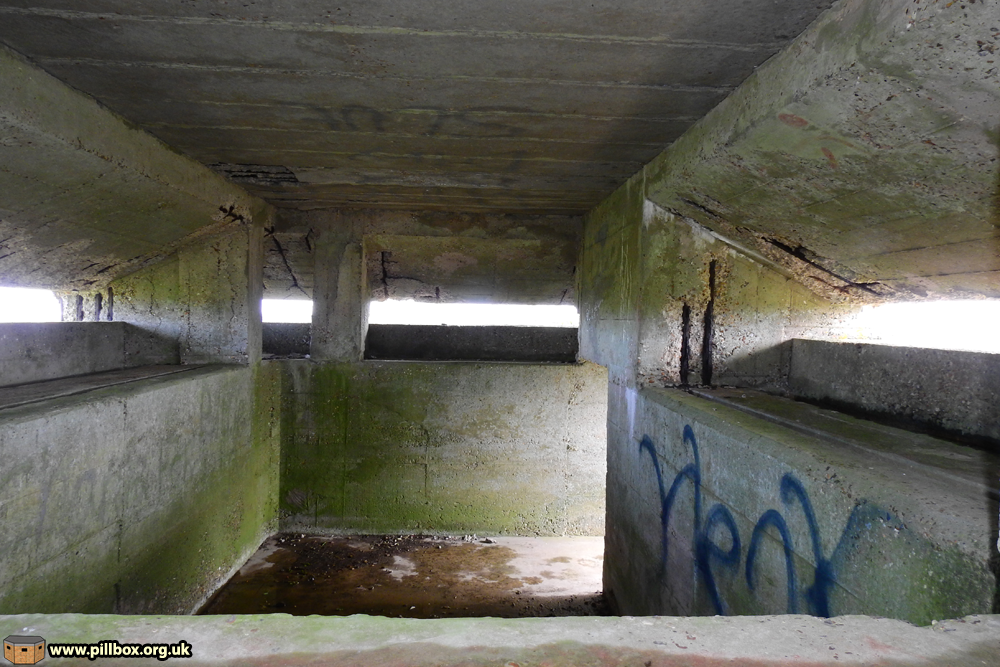
I used my survey data to build the pillbox as a 3D model and, upon completion, my first task was to test the viability of mounting the Bren gun on its tripod with the front leg placed in the aforementioned trough. The graphic below shows that it's theoretically possible, but the lack of support for the rear legs of the tripod was a mystery, as all other pillboxes I've seen designed for the Bren tripod have some means of support for them. The next obvious step was to try setting up a Bren on a tripod in one of these pillboxes.
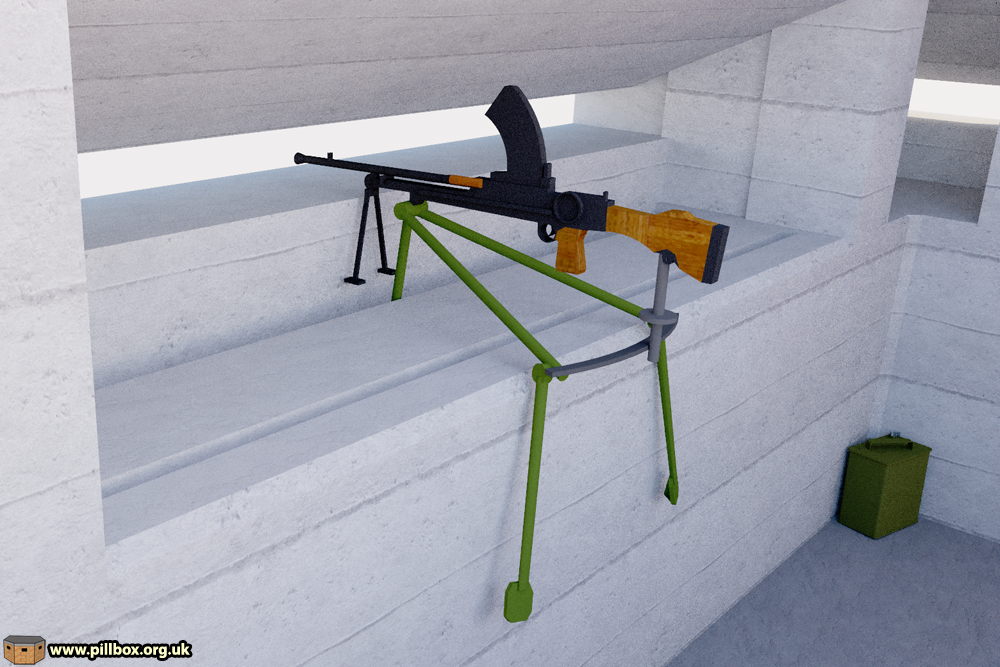
I had previously had contact with the keyholder of a similar pillbox at Winchelsea Beach and gained permission to clean out one of the embrasures to experiment setting the Bren up.
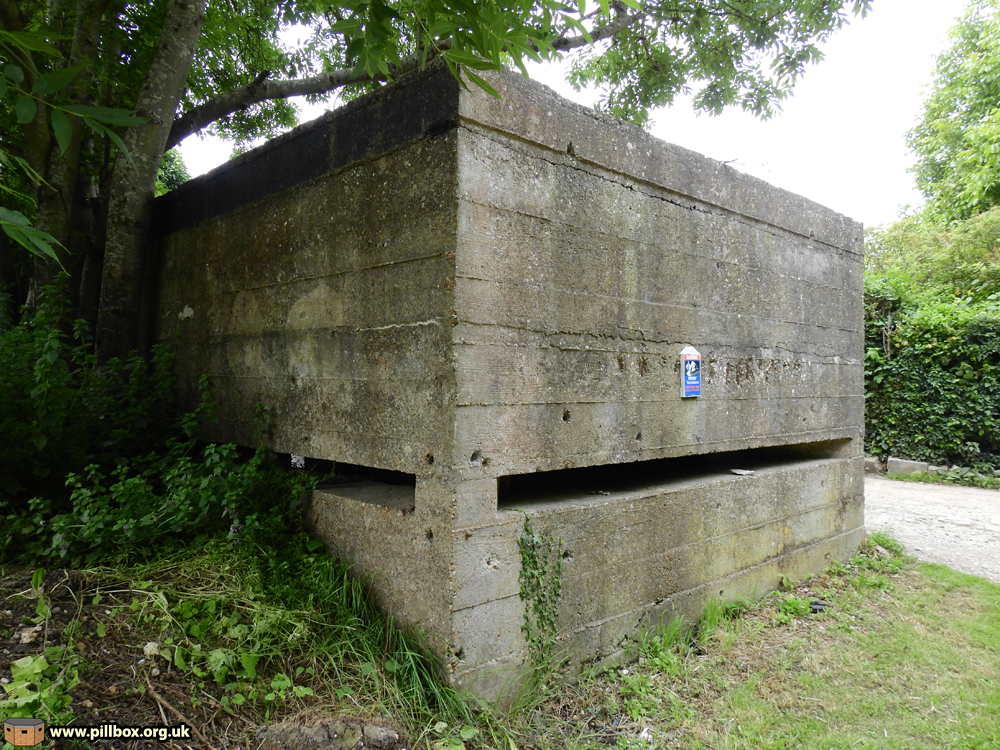
The interior was full of junk and lots of dust and cobwebs. I chose to focus on one embrasure as all the troughs were jammed full of earth, litter, debris and in some cases, stagnant water.
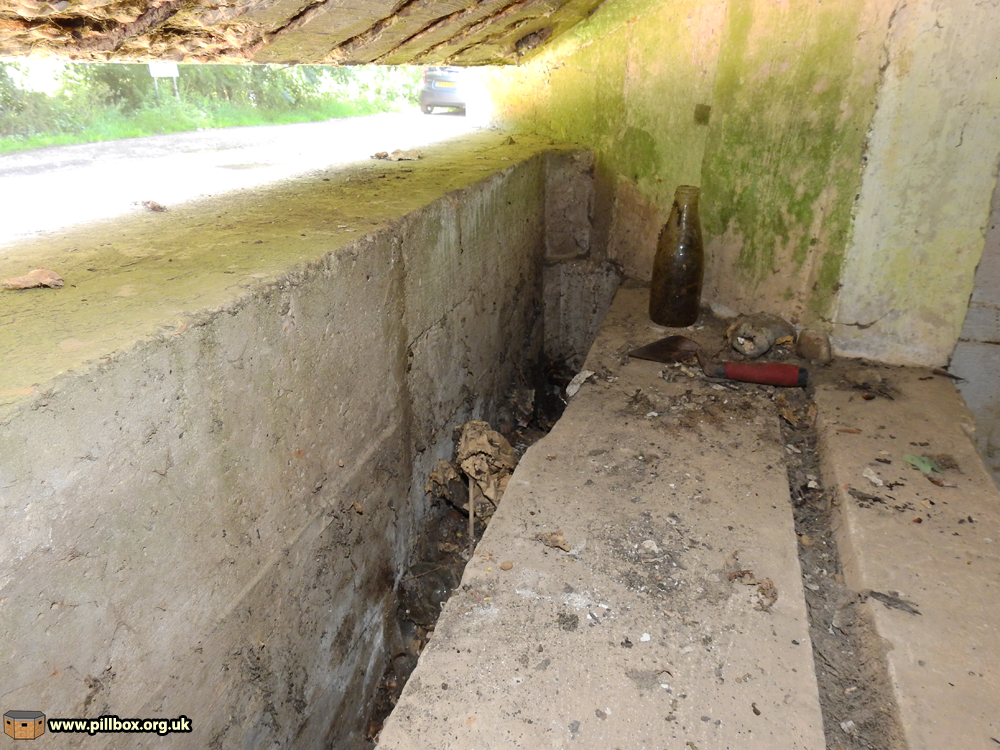
It took two hours to remove the rubbish from the trough and get it cleaned up:
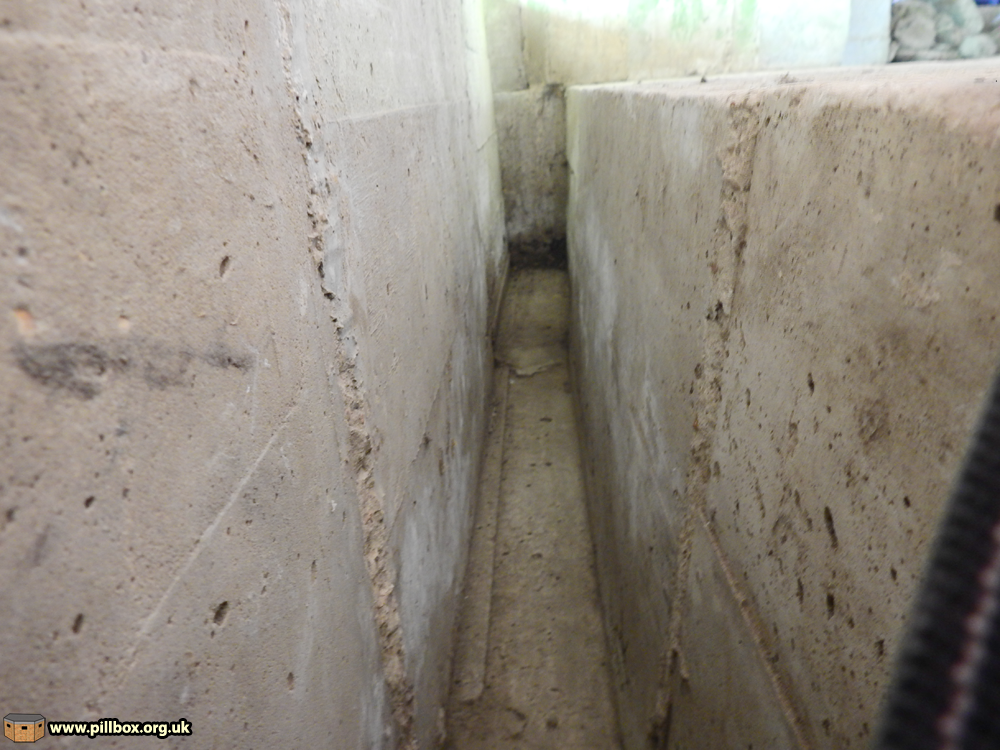
The intital setup proved to be a success:
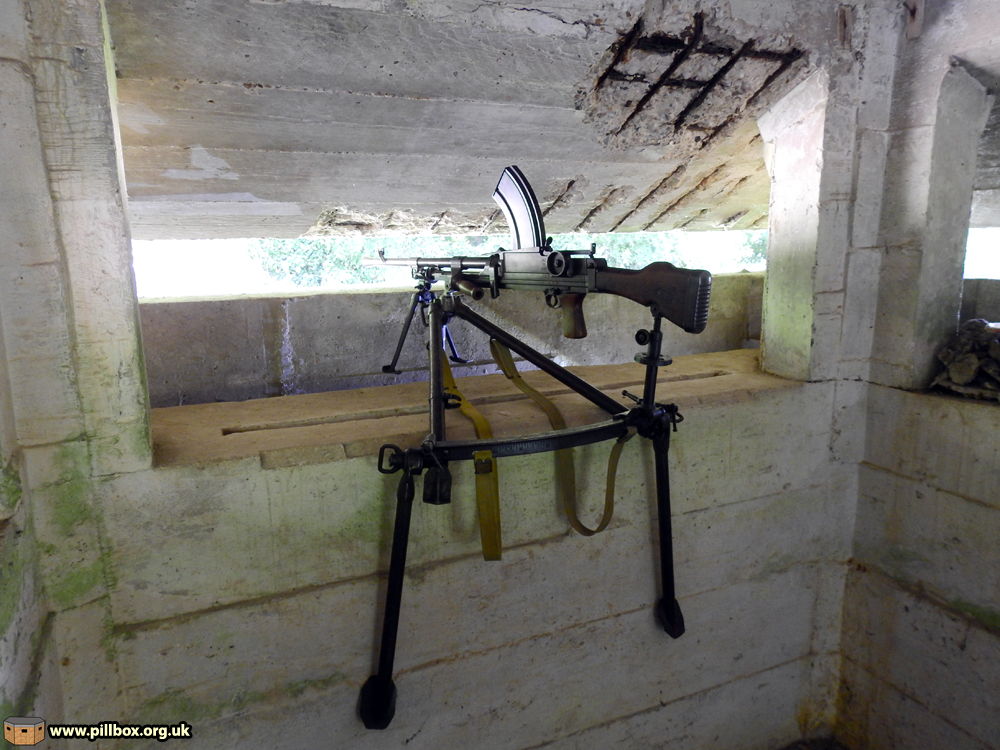
The support for the rear legs was seemingly negated by the chamfered edge of the embrasure sill and by clamping the legs in tight to the wall. This provided a rock solid firing platform that rough handling couldn't shake loose. Note the way the chamfered edge terminates short of the roof support on the left - further research is needed to establish whether or not this is deliberate in order to restrict the overall arc of fire from this embrasure.
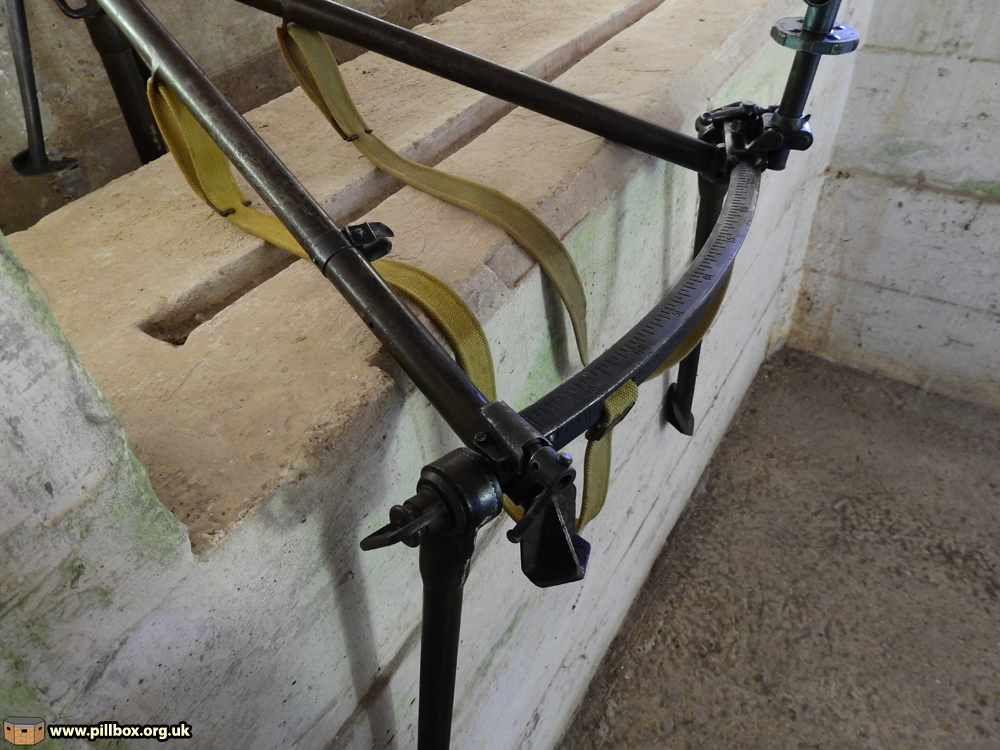
The learning curve didn't stop here though, as it seems that the tripod is actually a necessity to easily fire the Bren from this pillbox. The graphic below shows the tripod setup (left), firing from the bipod (centre) and firing with the gun rested and bipod folded. The latter technique does not work as you'd need a sandbag to rest the gun on and the embrasure is too low for that. Firing from the bipod is precarious as the recoil could bounce the legs forward and down into the trough. If you fill the trough with sandbags or somehow prevent the bipod falling into it, bipod firing would work fine. Changing the top-mounted magazine was easily done in all three positions.
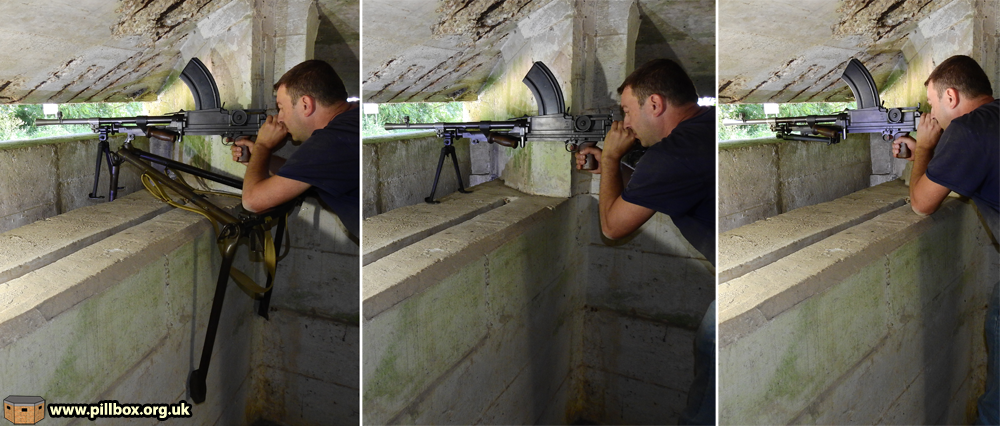
This experiment resolved the Bren tripod issue and confirmed what the 3D model had indicated. However, the question of the shallow channel between the trough and the edge of the embrasure sill was still unresolved; it certainly wasn't connected with the Bren gun and tripod, so there must have been another reason for it being there.
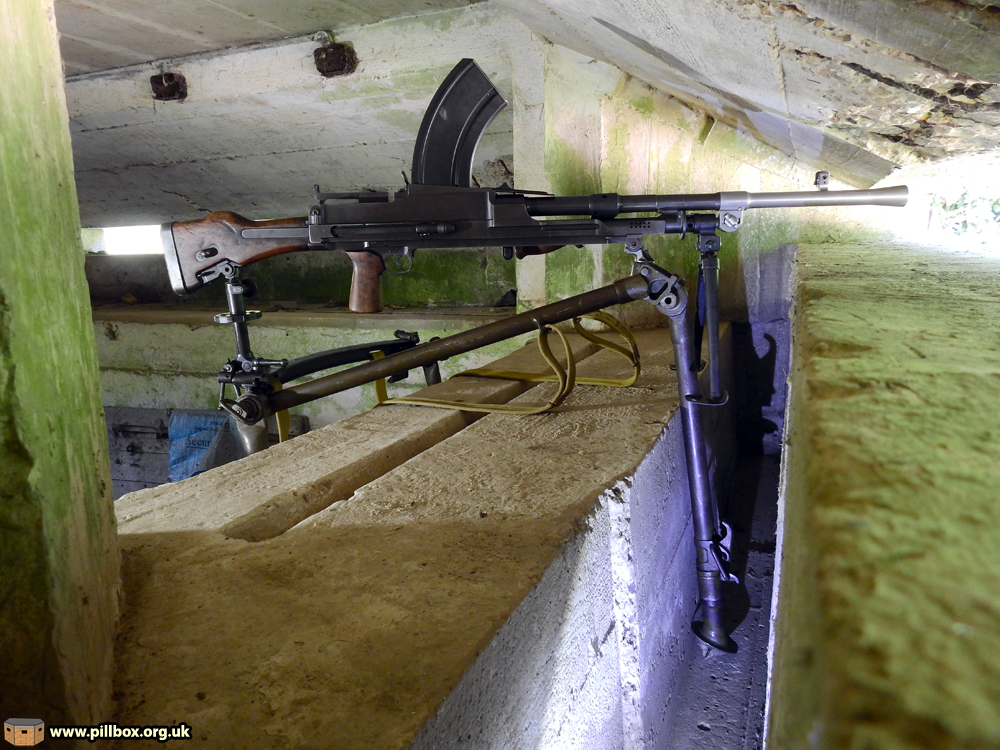
The channel is self-contained, so is not for drainage, it's clearly not for collecting spent cases, leaving us with the theory that it's related to a weapon mounting of some sort. We can rule out the Vickers gun and probably the Lewis gun too, leaving us with the Boys anti-tank rifle. Unfortunately I don't have a Boys rifle, so it was back to the 3D model.
I found some detailed drawings of the Boys rifle online and used them to build a scale model to place into the pillbox. Lo and behold, it was a perfect match! The channel appears to be for the L-shaped shoes of the Boys monopod that would otherwise make the weapon unstable if set up on a hard, flat surface. It also gives the gunner an edge to push against to help resist the fearsome recoil. It can't be coincidence that the forward edge of the channel is set at the correct distance to ensure the muzzle of the Boys rifle is flush with the outer wall of the pillbox. This ensures the blast, noise and crucially, the round itself, leave the pillbox; a .55-inch bullet richocheting around the interior would be highly dangerous. Although I can't ultimately confirm this in reality, the success of the model in predicting the compatibility of the Bren tripod is such that I'm trusting it with regards to the Boys rifle.
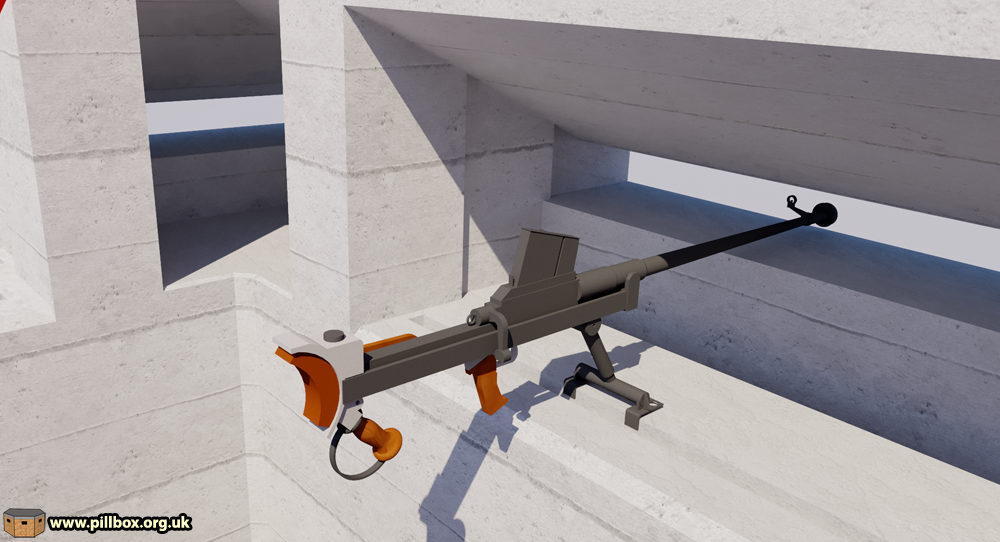
The graphics below show the 3D model in its entirety as a cutaway with both Bren guns and Boys rifles mounted.
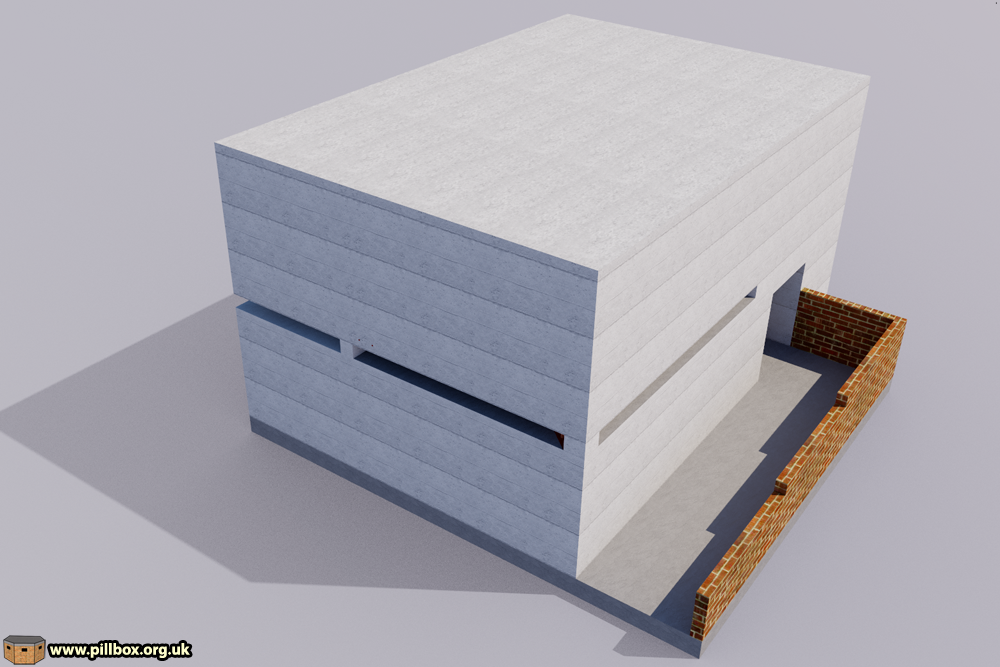
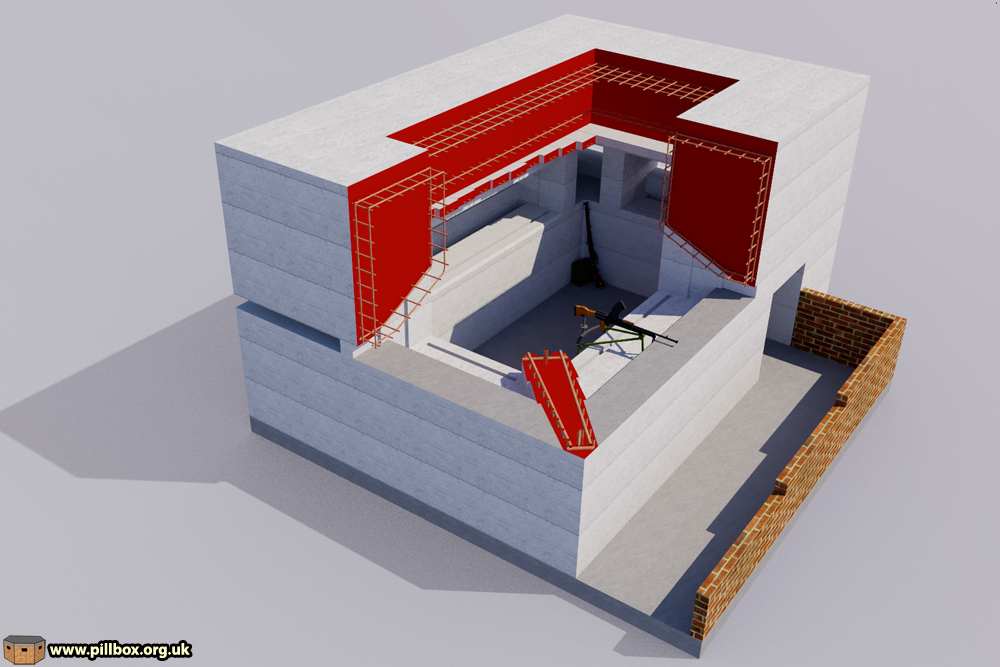
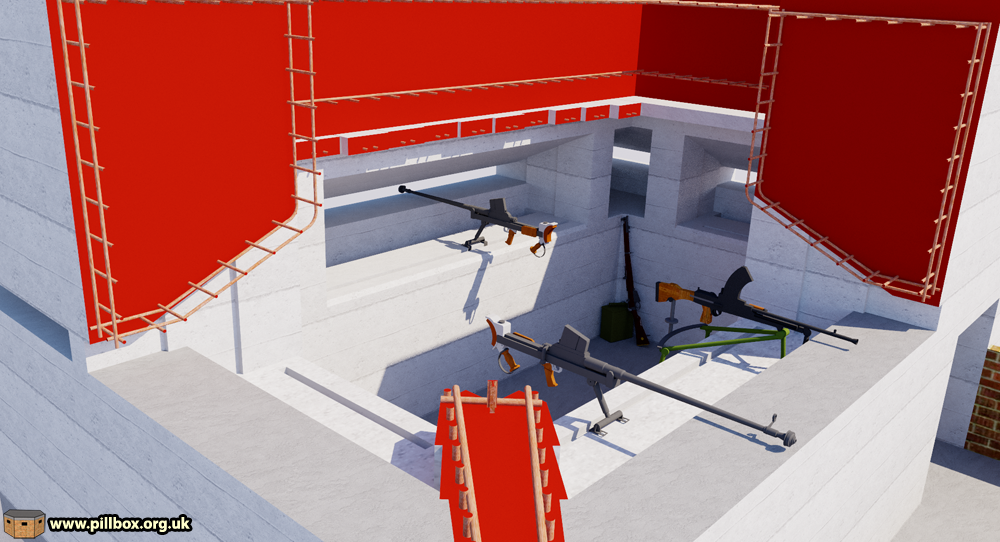
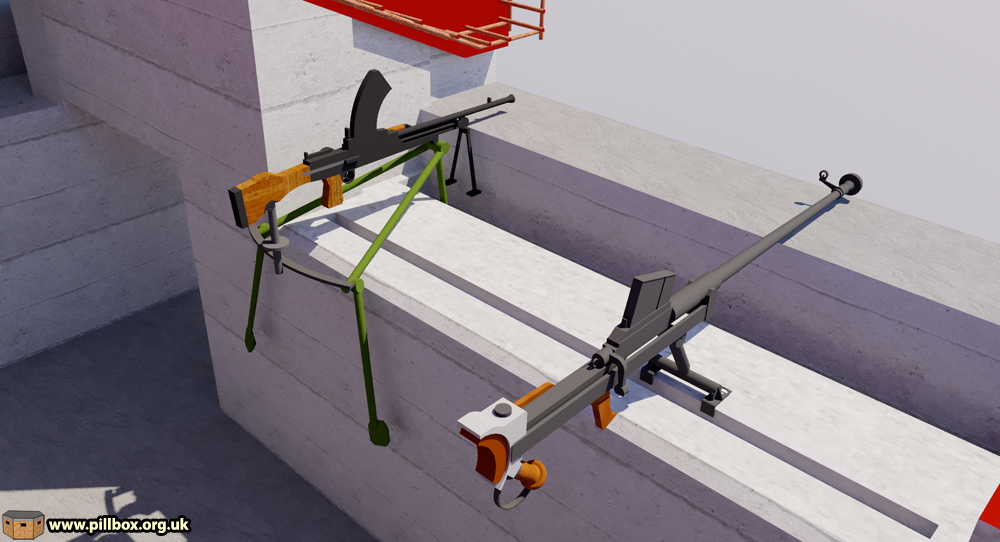
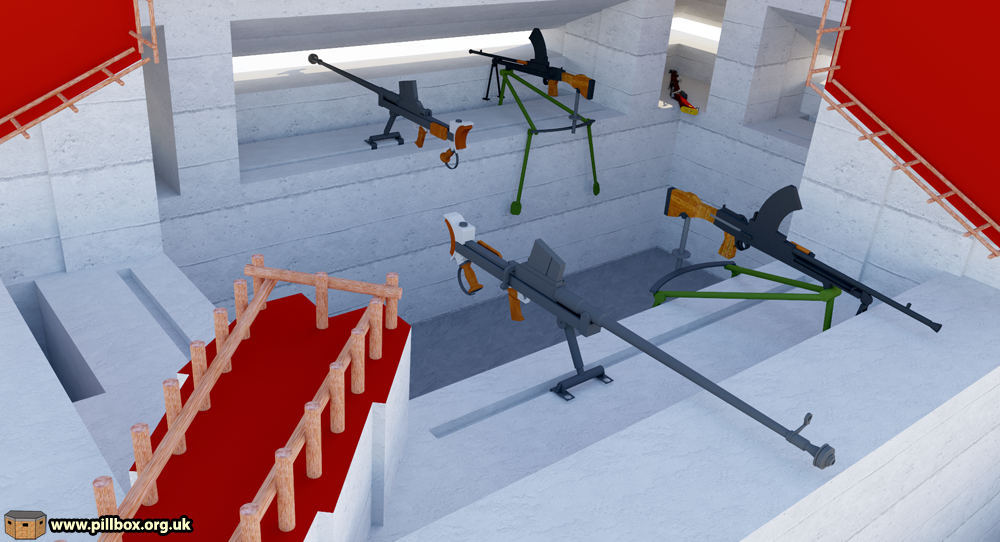
We've seen how two contemporary pillbox designs in the Rye area have different features, namely the size of the embrasures. A detailed assessment of both shows that the differences only identify different weapons and not different functions. It's easy to see how the issue of misidentification arose in this particular case, but as ever, it's down to detailed study and seeing what the documents and the structure itself can tell you.
- Pete

Email:
Blog Latest

Bishopstone reveals its pillbox secrets
18 October 2021

Pillbox or Observation Post?
10 June 2020

Uncovering the hidden secrets of a pillbox
8 June 2019

Review of 2018
31 December 2018

Wartime Christmas in East Sussex (2)
24 December 2018
Jargon-buster
Embrasure
A loophole or slit that permits observation and/or weapons to be fired through a wall or similar solid construction.
Pillbox
Generic term for a hardened field defensive structure usually constructed from concrete and/or masonry. Pillboxes were built in numerous types and variants depending on location and role.
This site is copyright © Peter Hibbs 2006 - 2024. All rights reserved.
Hibbs, Peter Pillbox or Observation Post? (2024) Available at: http://www.pillbox.org.uk/blog/251725/ Accessed: 24 April 2024
The information on this website is intended solely to describe the ongoing research activity of The Defence of East Sussex Project; it is not comprehensive or properly presented. It is therefore NOT suitable as a basis for producing derivative works or surveys!